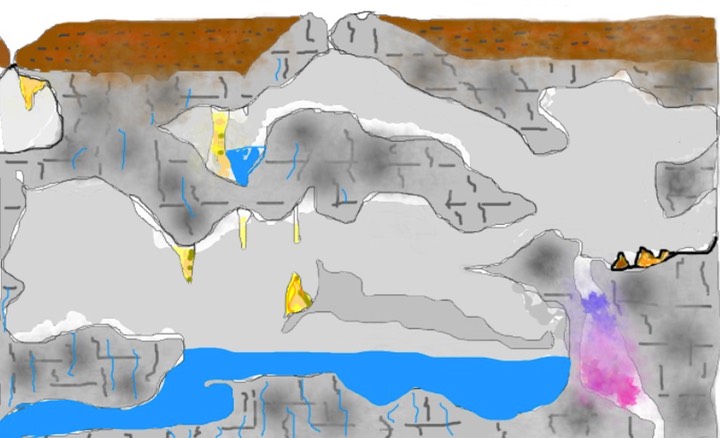Return to Homepage Return to Dixie Caverns page
As you saw before, water will infiltrate the limestone through pore spaces and fractures. If this water is even slightly acidic it will dissolve the limestone. (If you recall, limestone is comprised primarily of the mineral calcite, which was the one mineral you had that reacted with HCl.) At first the water will just enlarge pore spaces. It will then create crevices, which can grow into larger fractures.

Above you see a new opening forming in the limestone exposed outside of Dixie Caverns. Perhaps in 90,000 years, or so, it will open into the caverns!
These larger crevices, in turn, will enable more water to infiltrate, which can speed up the rate of dissolution. Depending on the local conditions (including precipitation and humidity), after a few hundred thousand years the dissolution can be enough to form extensive caves and caverns.

In the image above you can see pools of water. The upper pool is a pond collecting water from the drops falling from the upper surface. The lower pond is a combination of those drips and the sub-surface exposure of the local water table.
Once you've gotten into the opening of the cavern a number of additional speleothem features can be seen. Continue to more spelothem.